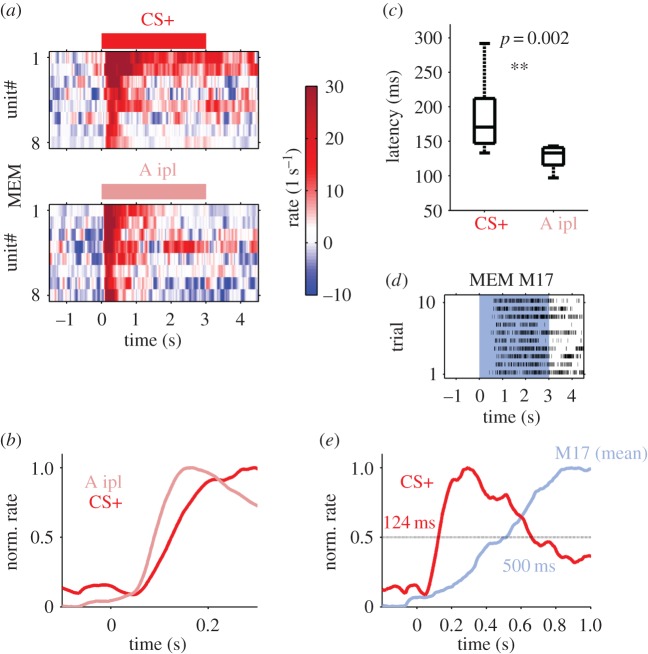Figure 5.
Delayed response after lateral integration. (a) Trial-averaged firing rates of eight selected units (A contra, top panel; same selection as in figure 3) in comparison with eight units responding to the same odour but with inverted spatial information (A ipl, lower panel; for selection see methods) during memory retention (MEM). Stimulus identity and duration is indicated on top of each panel. (b) The average rate response revealed a temporal delay for units responding to contralateral stimulation with odour A (CS+) as compared with ipsilateral stimulation with A. Time zero indicates the stimulus onset. (c) Comparing the latency distributions across units revealed a significant difference (Wilcoxon's rank sum test, p < 0.001) with a median of 170 ms for CS+ and 133 ms for A ipl responses (37 ms delay between sides). (d) Trial-resolved activity of M17 muscle in a single animal in response to CS+ stimulation during the MEM phase. Each tick mark indicates a muscle potential. The 3 s of odour stimulation is marked by the blue shading. (e) M17 rate averaged across all animals (blue). The half-maximum of the M17 rate was reached 500 ms after stimulus onset (time 0). The mean firing rate of the MBON units in response to the CS+ is shown in red. MBON units reached the half-maximum response rate 124 ms after odour onset.

